Ubon Ratchathani is renowned for one of the biggest and most spectacular candle festivals in Thailand. Taking place around July of every year to mark the beginning of Buddhist Lent, the Ubon Ratchathani Candle Festival illustrates the people’s devotion to the Buddhist tradition as well as their artistic skills. The local artists spend endless hours in elaborately moulding, sculpting, and carving candles into incredible sizes and shapes, including Thai mythical creatures and life of the Buddha. This unique and sophisticated work of art reflects their amazing skills. The highlights of the Festival include the Candle Procession that will move along the roads to end at Thung Si Mueang, the Candle Competition, a Light and Sound show, cultural shows, and displays of local artisans’ candle sculptures. The candles will finally be offered to various temples in the province.









Wat Thung Si Mueang
The temple is renowned for its traditional wooden Ho Trai – the Hall of Tipitaka scriptures. The wooden hall was built in the pond to protect the Tipitaka from insects. The four-room hall houses wooden scripture cabinets which are beautiful lacquer work decorated with gold leaf. It has blending art styles; namely, Thai-style partitioned wooden walls with carving of zodiac animals and floral motifs at the bottom, Burmese-style tiered roof with traditional Thai roof decorations, and Laotian sculpture on the gables. Such decoration makes it a very beautiful hall.
Wat Nong Pah Pong
Founded by the highly revered Phra Bodhiyana Thera, also known as Luangpu Chah Subhaddo, Wat Nong Pah Pong is one of the best-known forest temples and has branch temples in several countries around the world. The tranquility amidst the forest enables monks to study and practice Vipassana meditation. The important construction of this temple is a huge Ubosot (ordination hall) built with a blended style of modern and local Isan architecture. The building’s poles and walls were beautifully decorated with terracotta pictures depicting monks on pilgrimage and important places of worship in Thailand. After Luangpu Chah passed away, his body was cremated within the temple’s grounds and that location has now become a stunning golden Chedi or Chedi Phra Bodhiyana that contains his relics where visitors can come to pay respect. Visitors are also recommended to visit the Phra Bodhiyana Thera Museum, which contains a collection of Luangpu Chah’s belongings, a wax figure of Luangpu Chah, as well as displays of articles and items that tell the story of Luangpu Chah and his teachings.
Wat Maha Wanaram
Visit Wat Maha Wanaram, also known as Wat Pa Yai, which is the first Maha Nikaya temple in the province, to pay homage to Prachao Yai In Plaeng, one of the most highly revered Buddha images of Ubon Ratchathani. Crafted in 1807 in the Laotian style, Prachao Yai In Plaeng is a stucco Buddha image covered with gold leaf, measuring 3 metres wide across the lap and 5 metres high in the subduing Mara position. The temple also houses 7 ancient sandstone inscriptions, in which one of them detailed the history of the construction of the temple and Phrachao Yai In Plaeng. A visit on the full moon day of the 5th lunar month, which usually falls in April, enables visitors to join in the annual celebration that is held to honour Prachao Yai In Plaeng.
Wat Phrathat Nong Bua
Visit Wat Phrathat Nong Bua, the province’s important Theravada temple, to see the Bodh Gaya-style pagoda named ‘Phrathat Chedi Si Maha Pho’ or ‘Phrathat Nong Bua’, which was built in 1957 to mark the 25th century anniversary of Buddhism. The distinctive white and golden Pagoda, measuring 17 metres wide and 56 metres high, houses the relics of the Lord Buddha. The white and golden plaster plates depicting the Buddha in different postures were used to decorate the whole pagoda. Also, the pagoda is surrounded by four smaller pagodas at each corner.
Ubon Ratchathani National Museum
Spend time getting to know more about Ubon Ratchathani by visiting the Ubon Ratchathani National Museum. The rectanglular-shaped building of the Museum features a hipped roof covered with kite tiles. The lotus stuccos are decorated under each window frame. Above each door frame and at the top of each pole are adorned with floral carved panels. Constructed in 1918 to serve as the Ubon Ratchathani City Hall, the Museum building now features exhibitions that explains the history, geography, geology, archaeology, folk culture, and ethnology of Ubon Ratchathani. The Museum also conserves and promotes local cultural heritage through displays of archaeological finds, as well as local textiles and crafts.


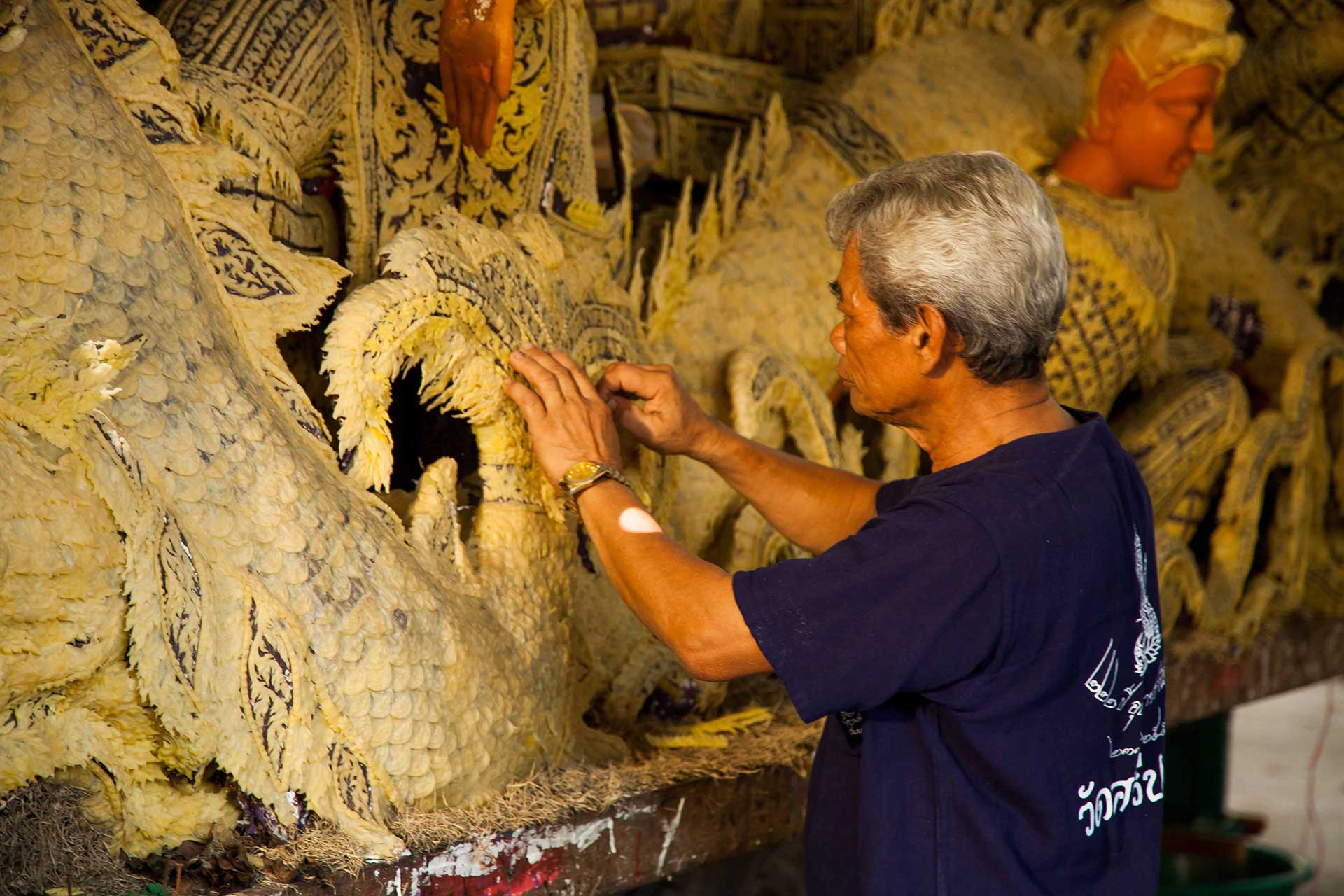
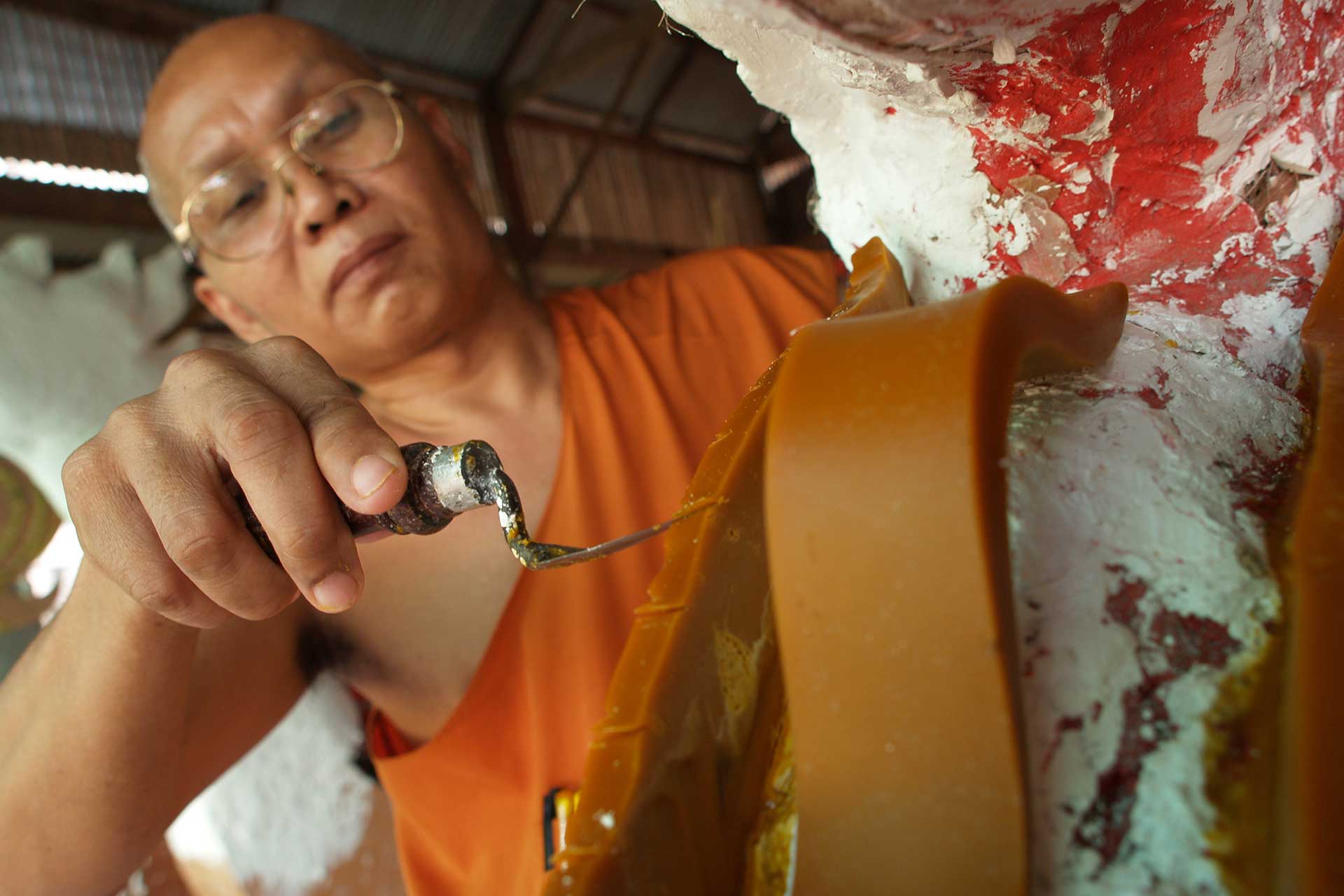
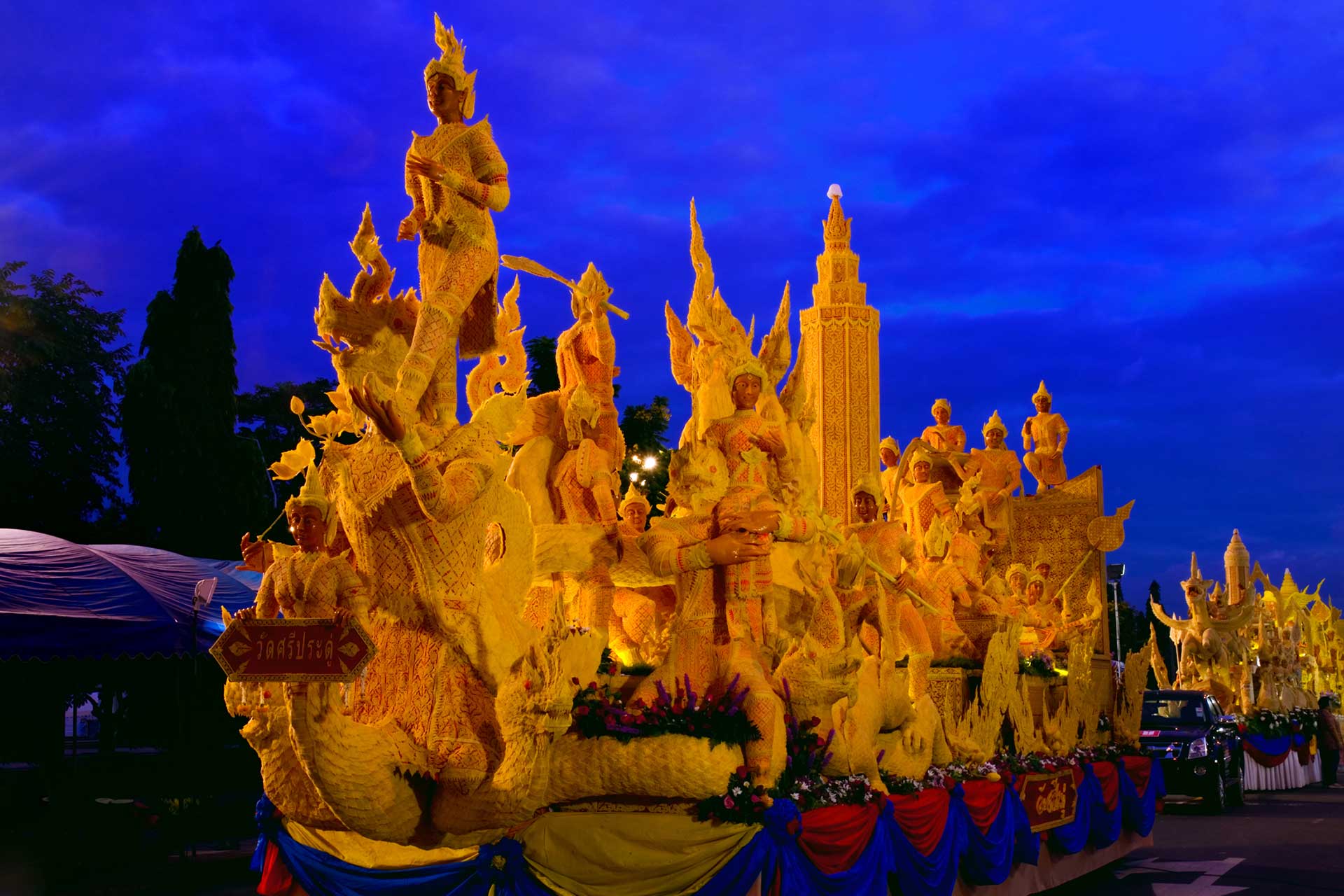
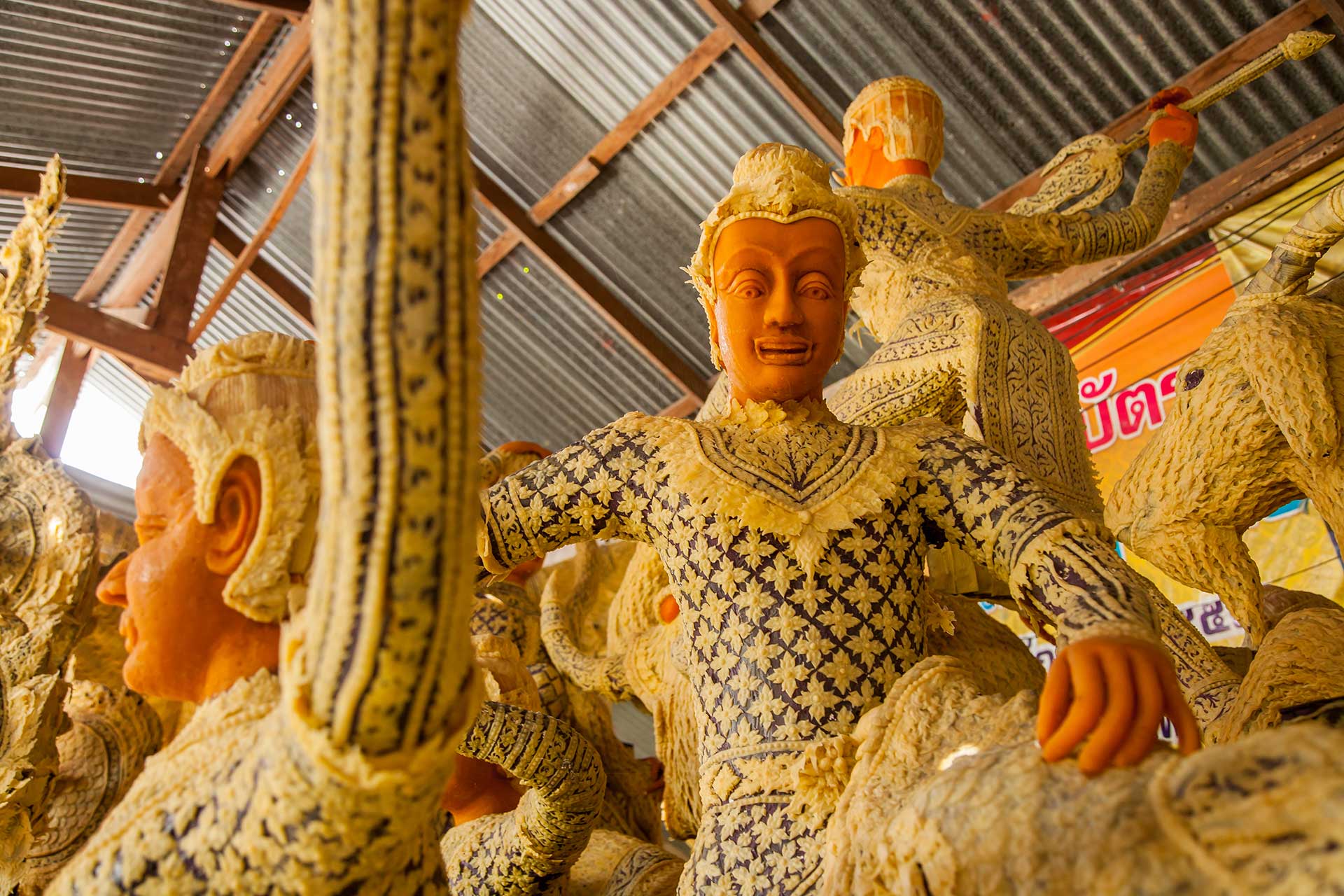
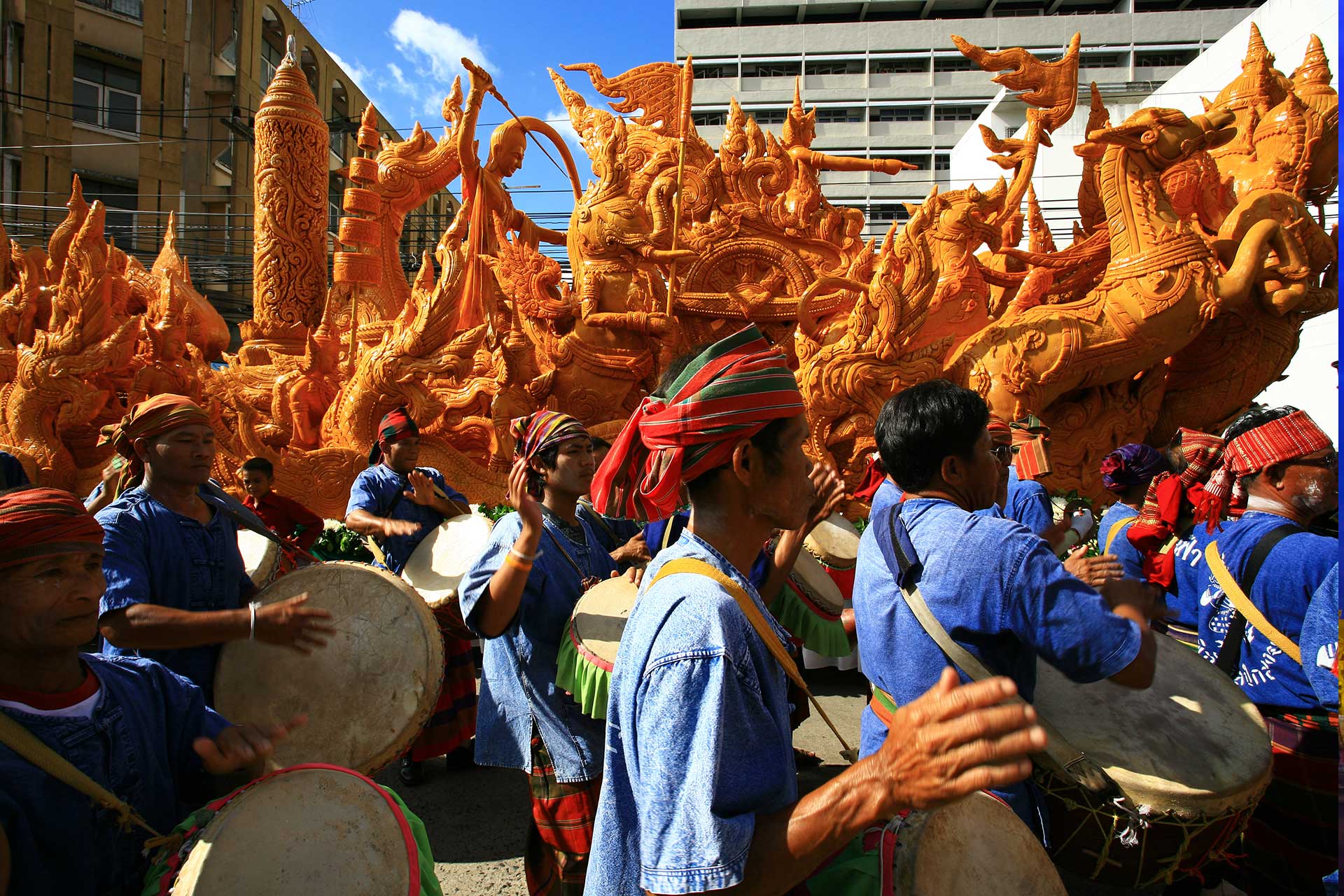
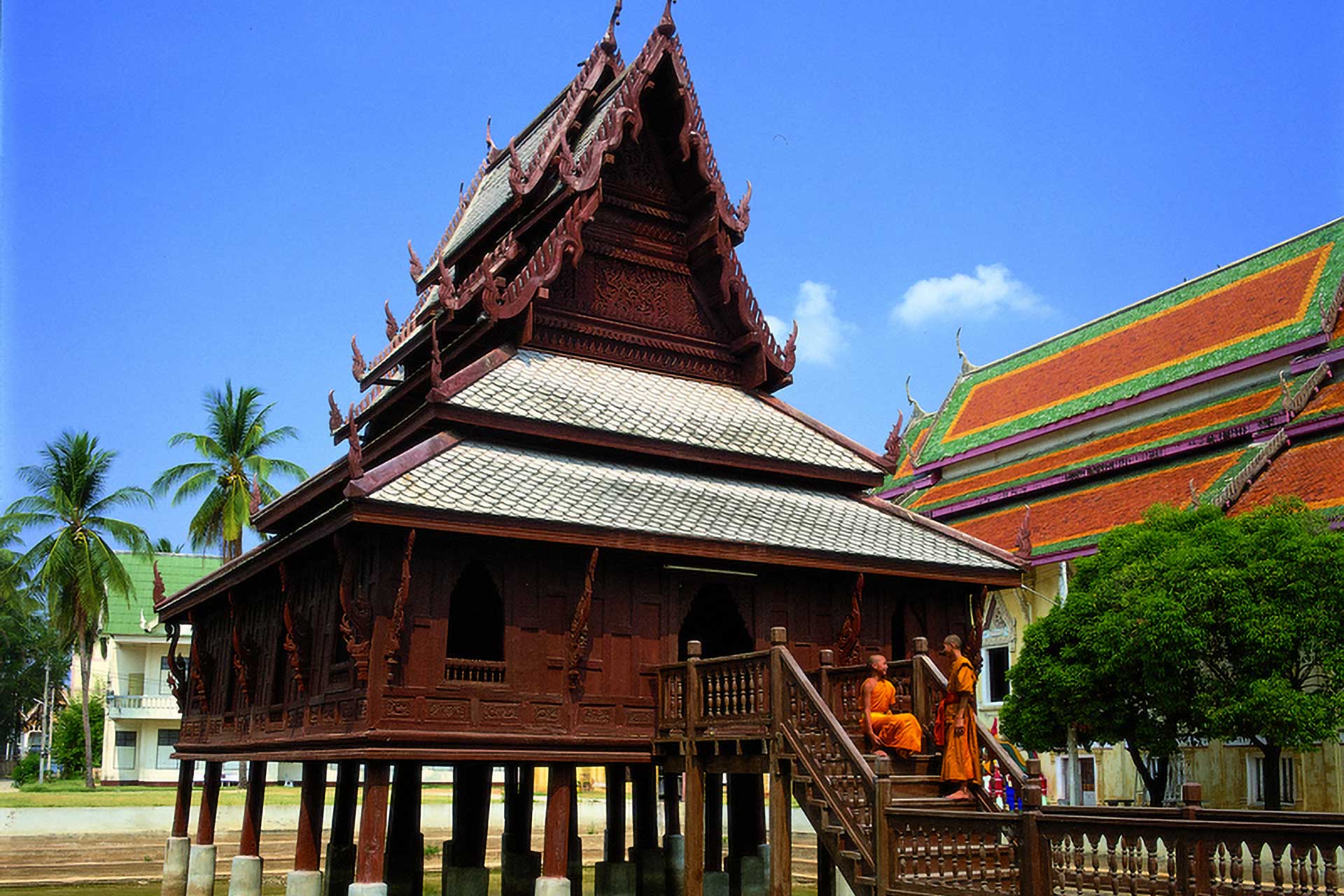
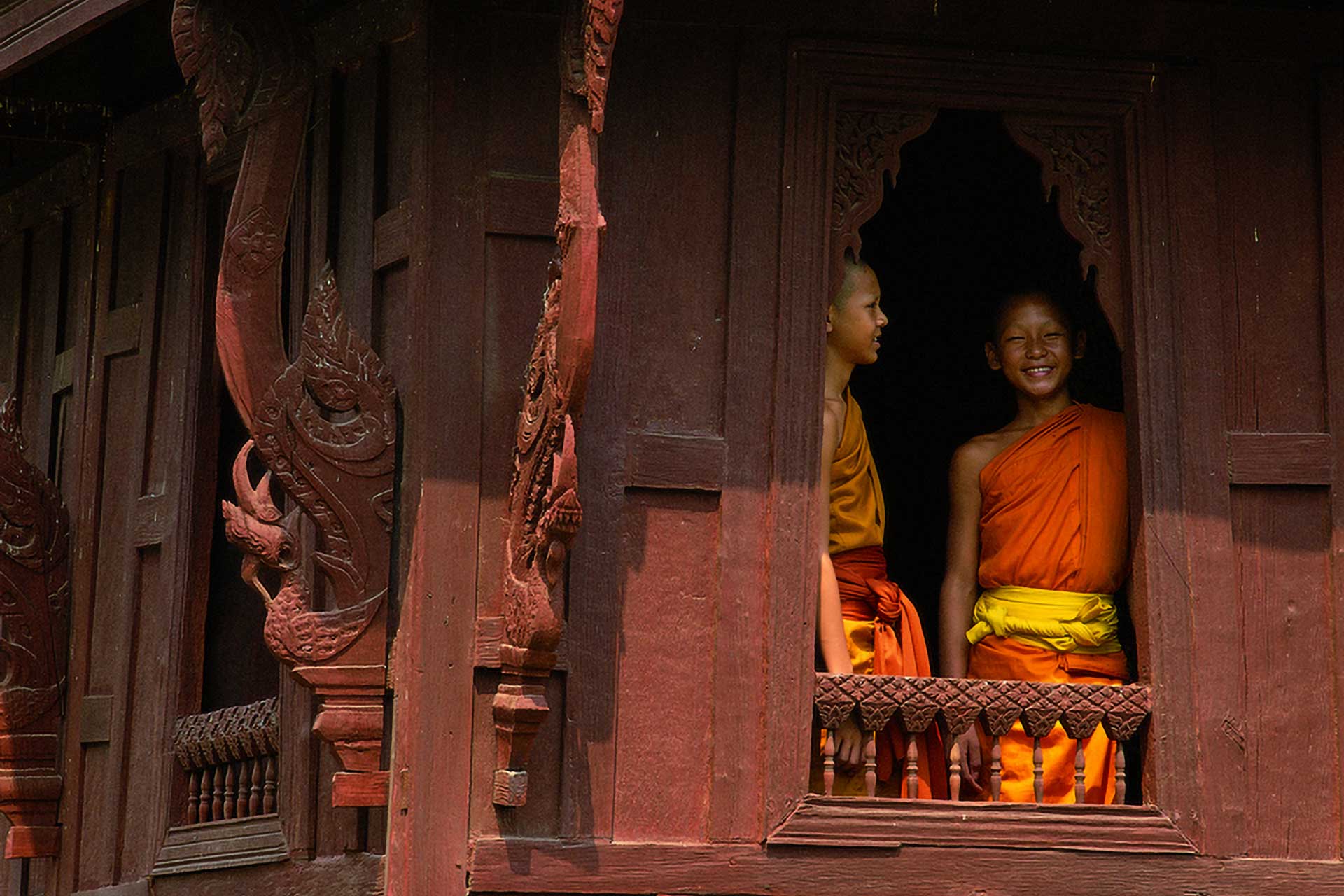
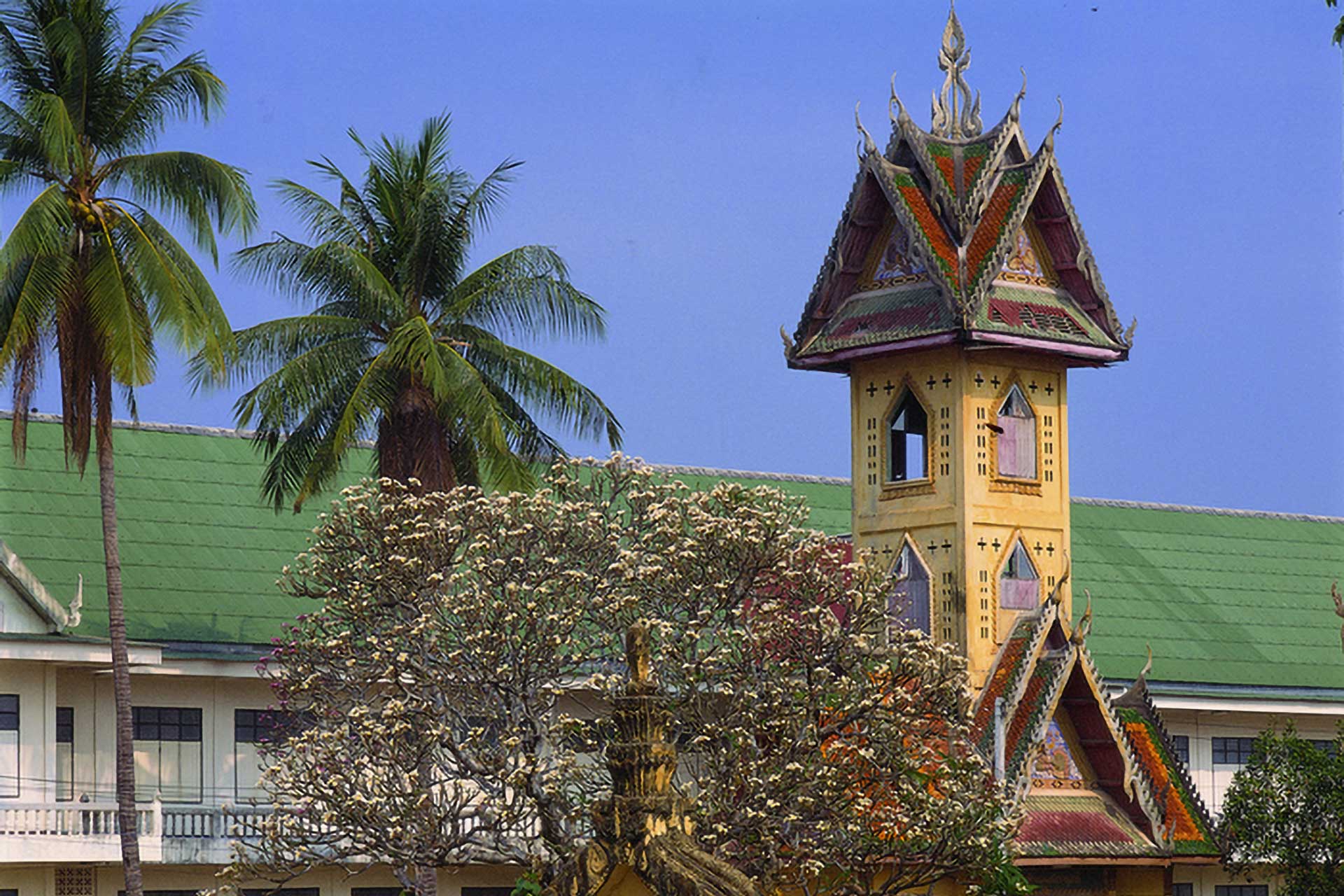
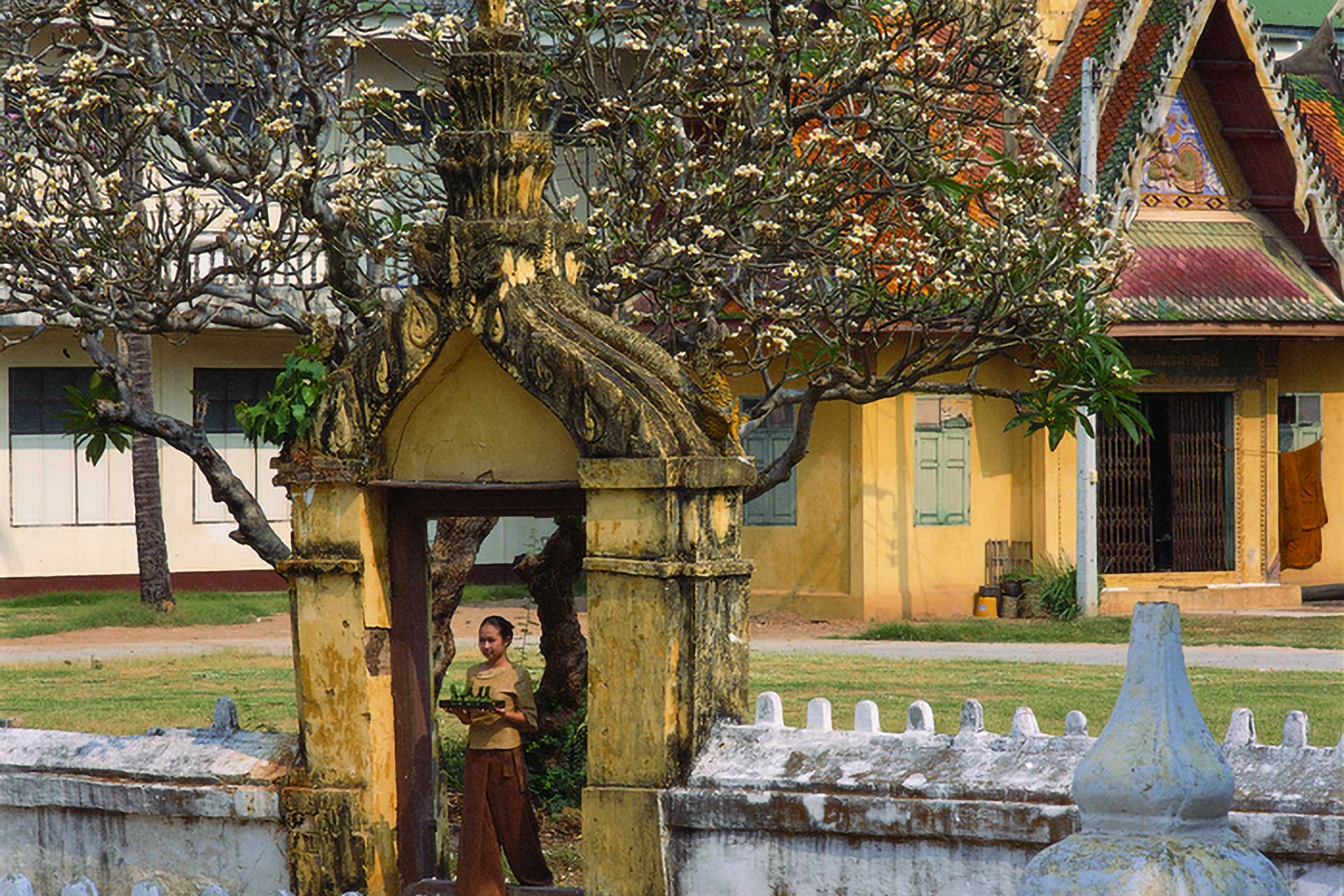
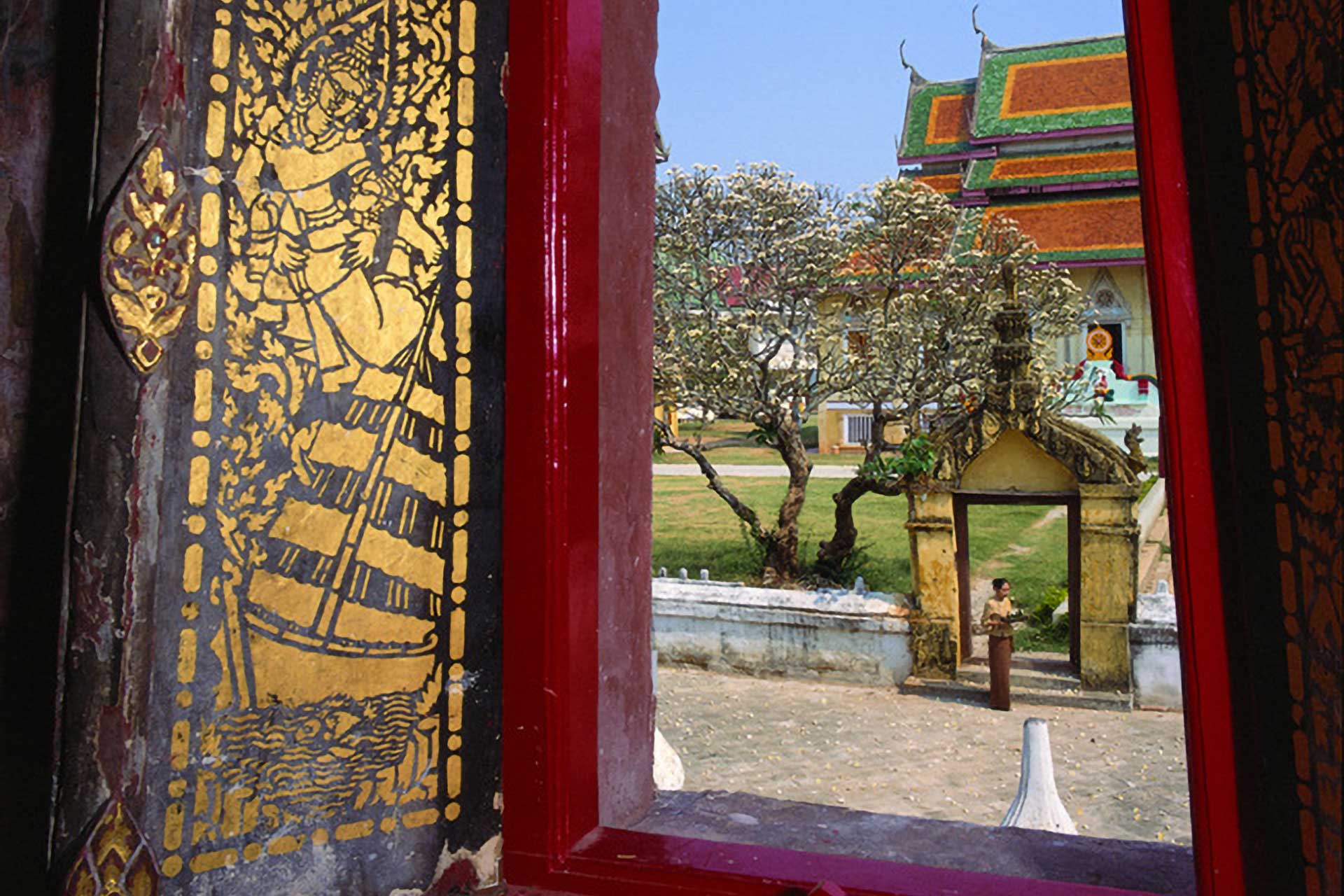
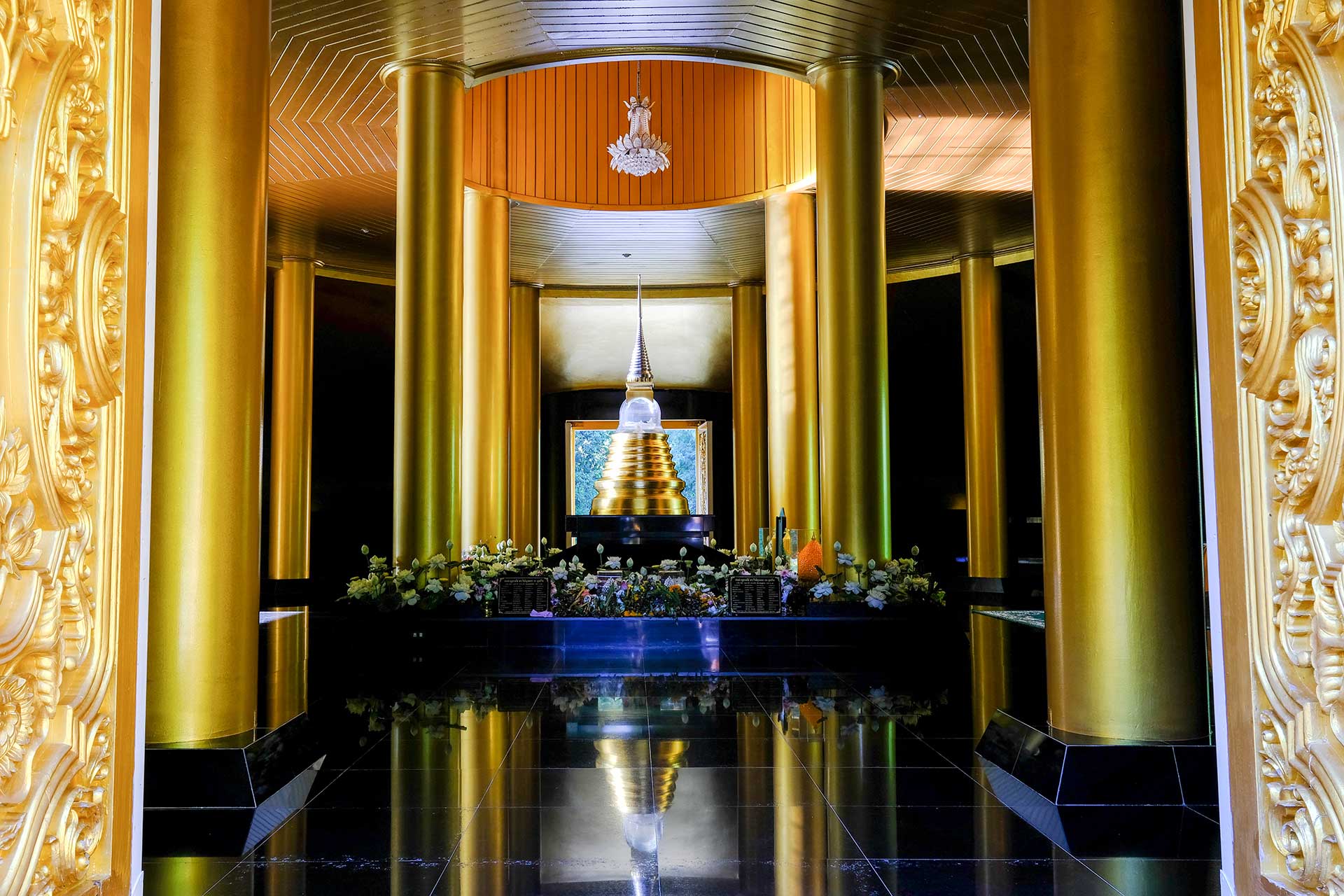
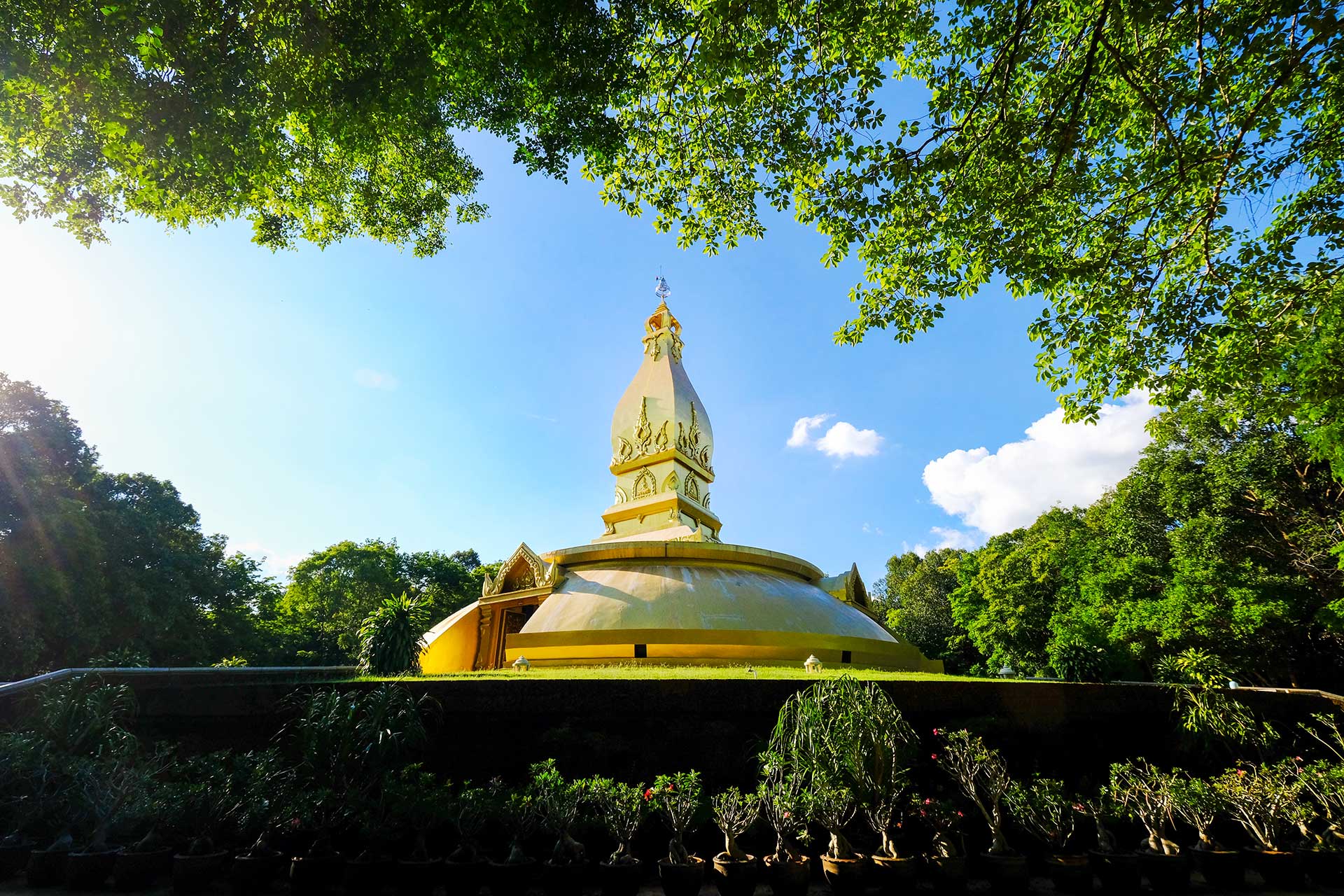
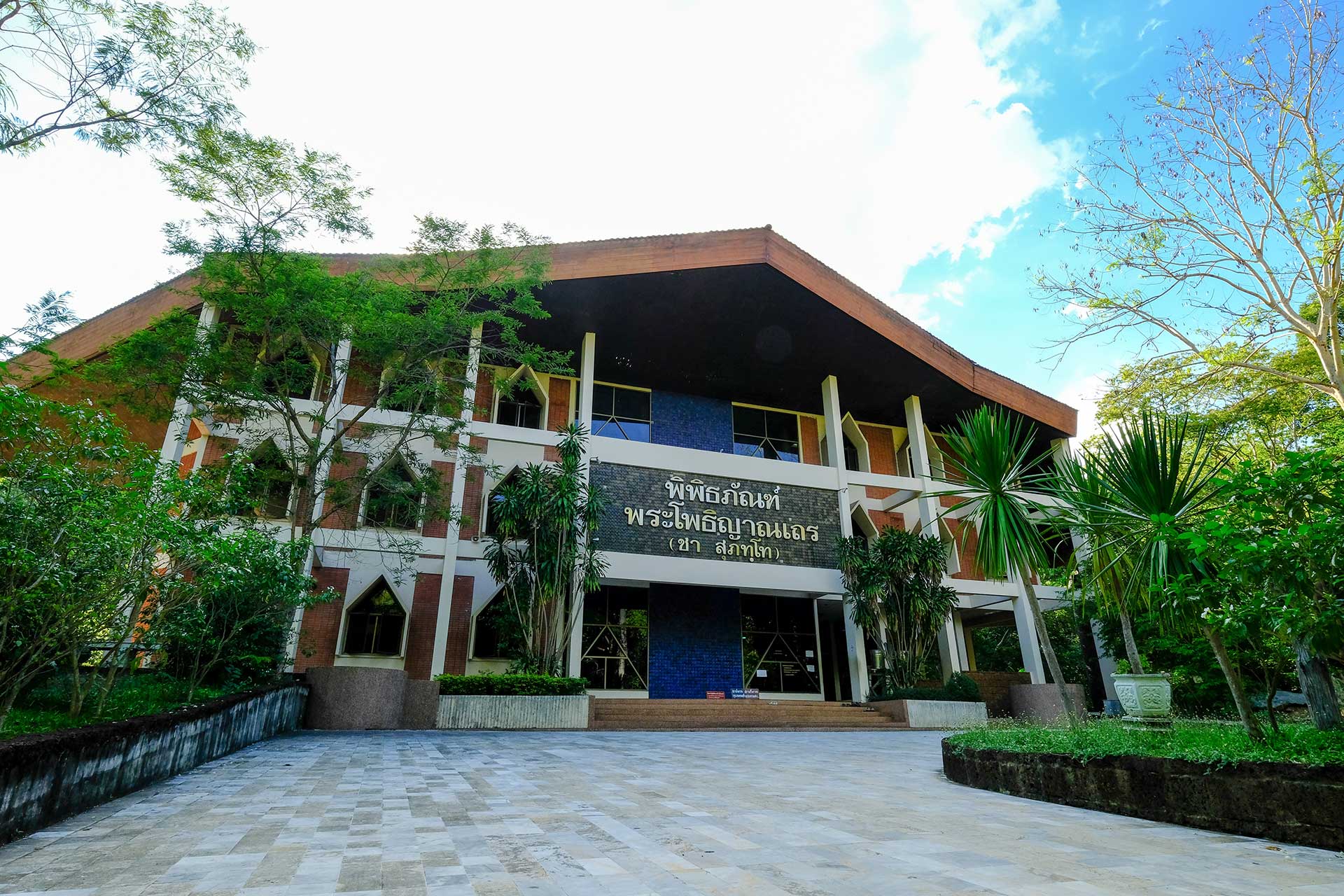
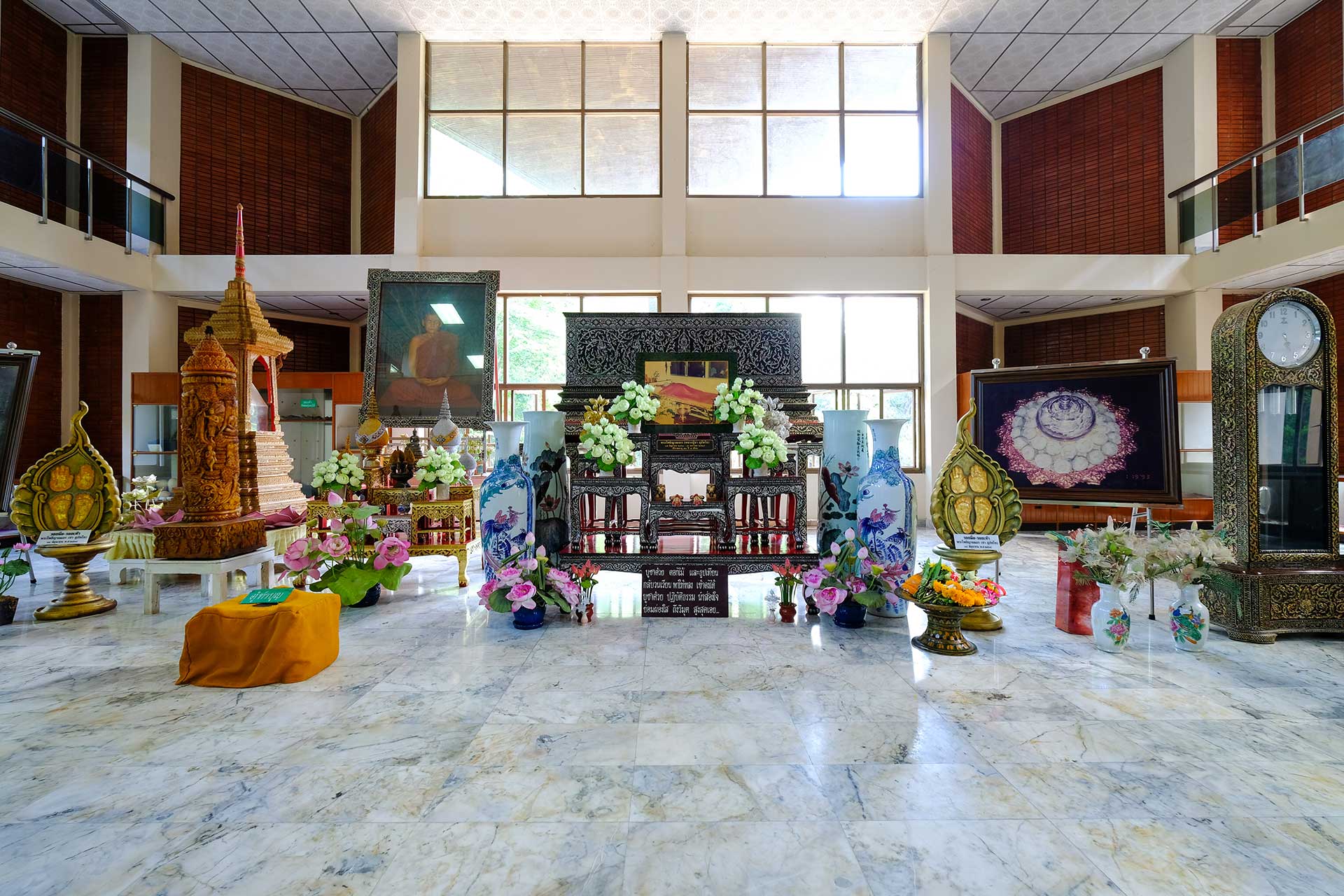
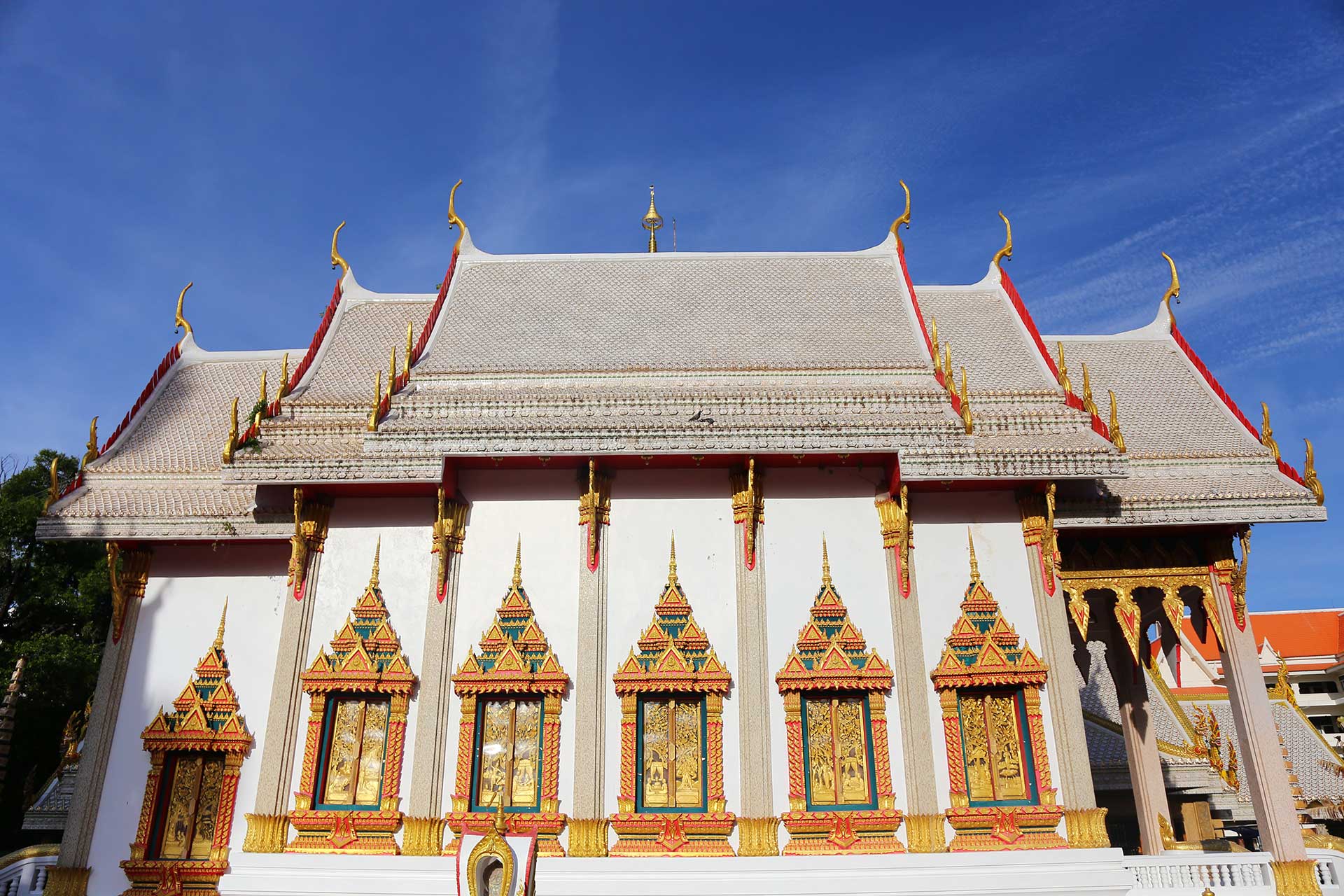
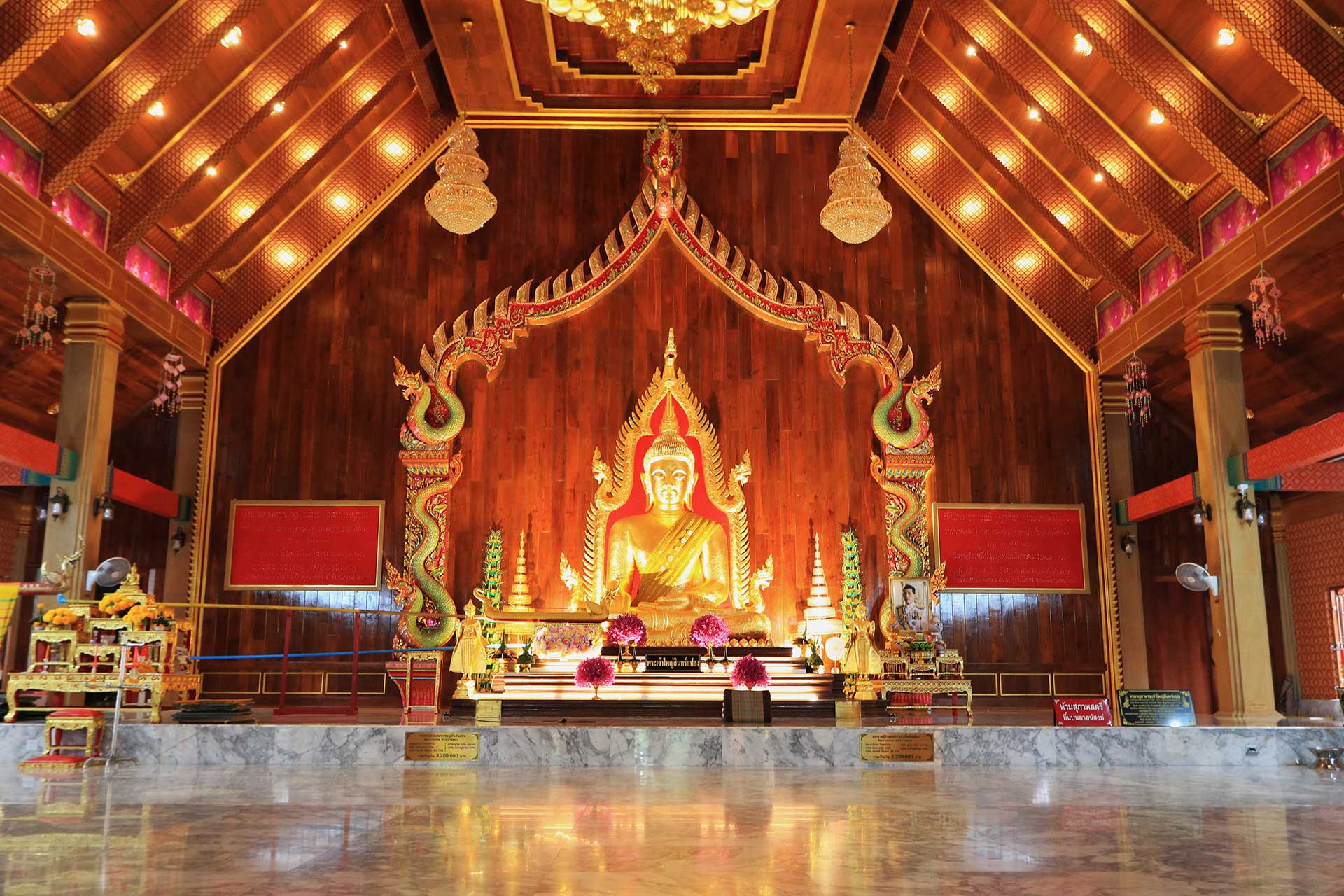
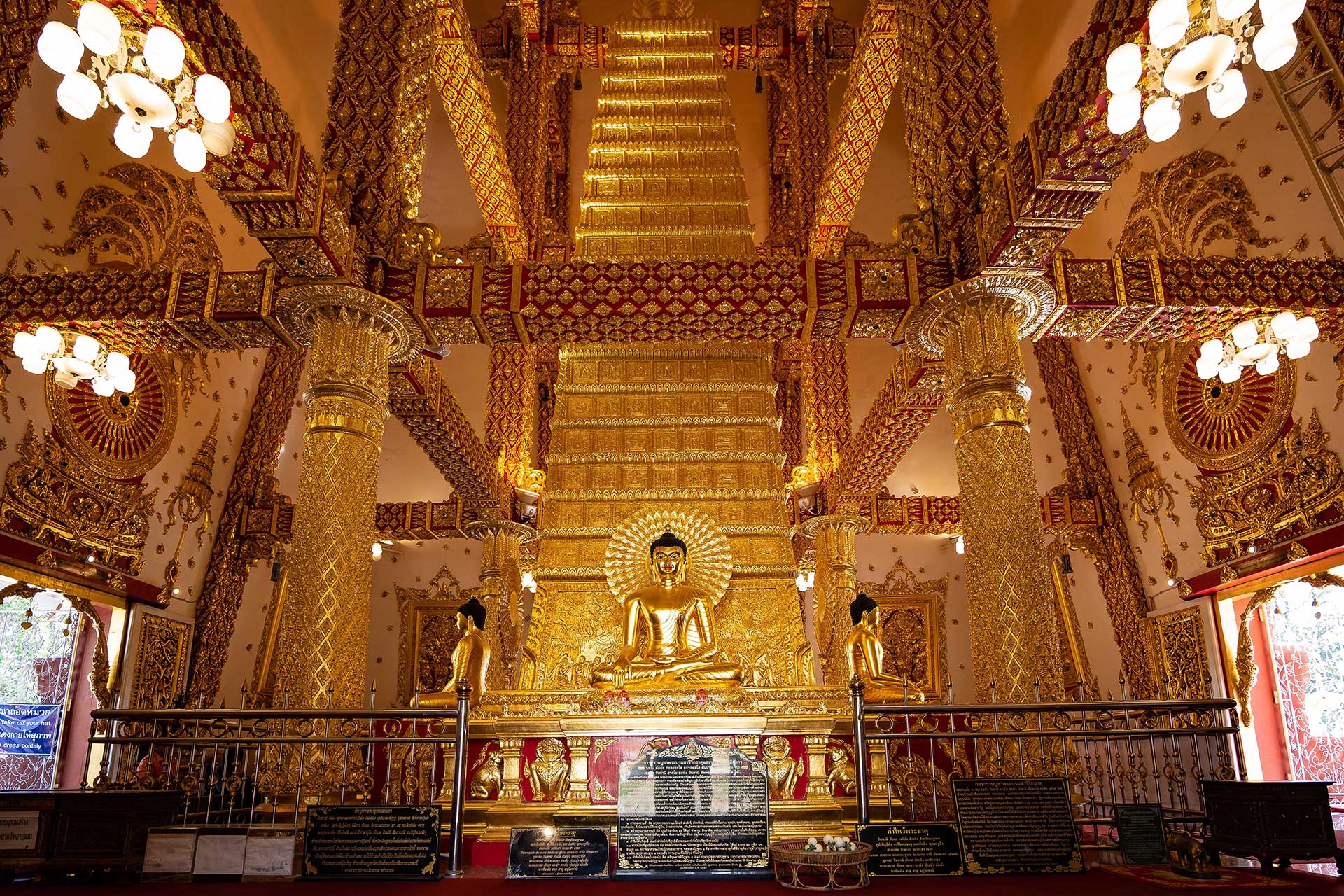
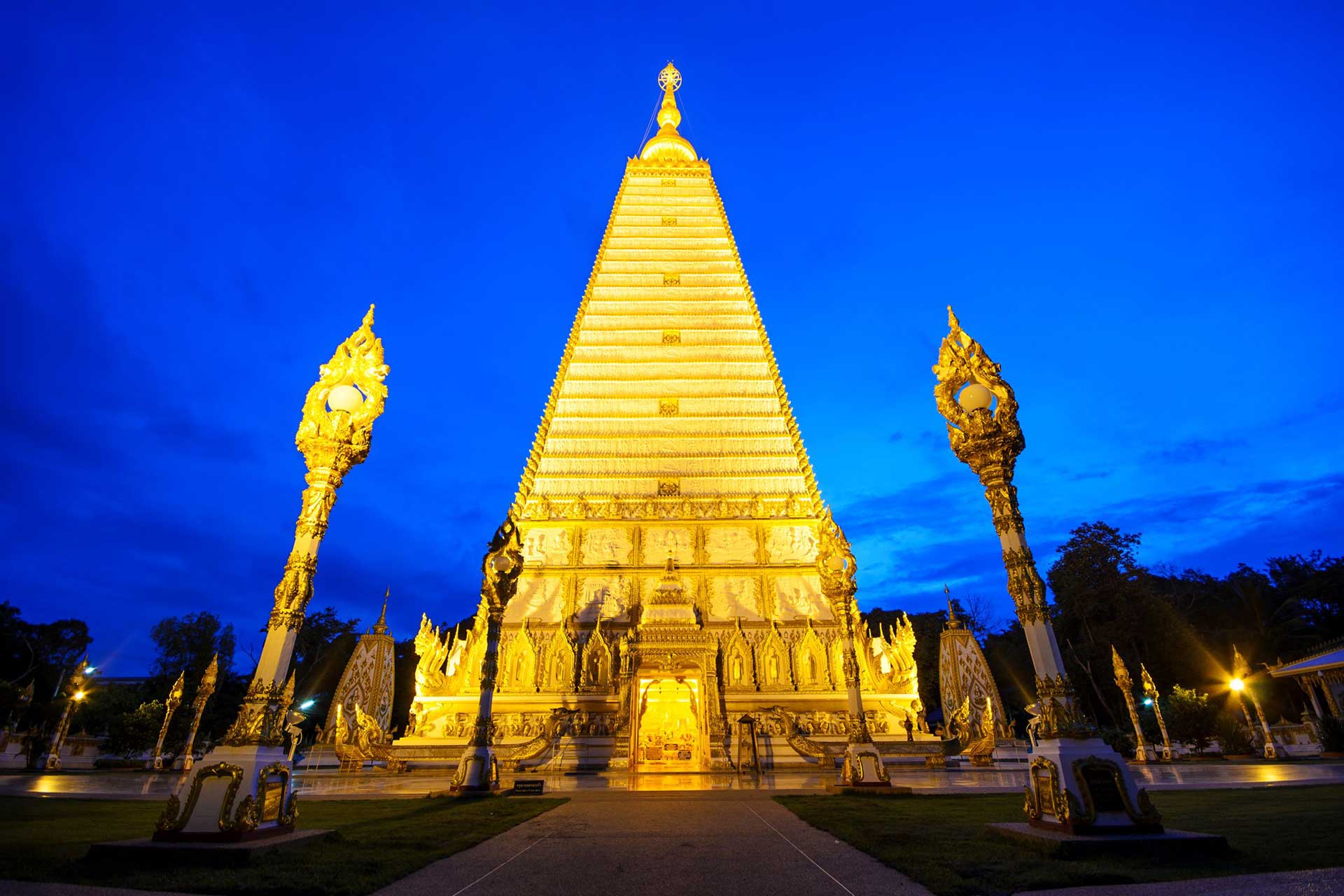
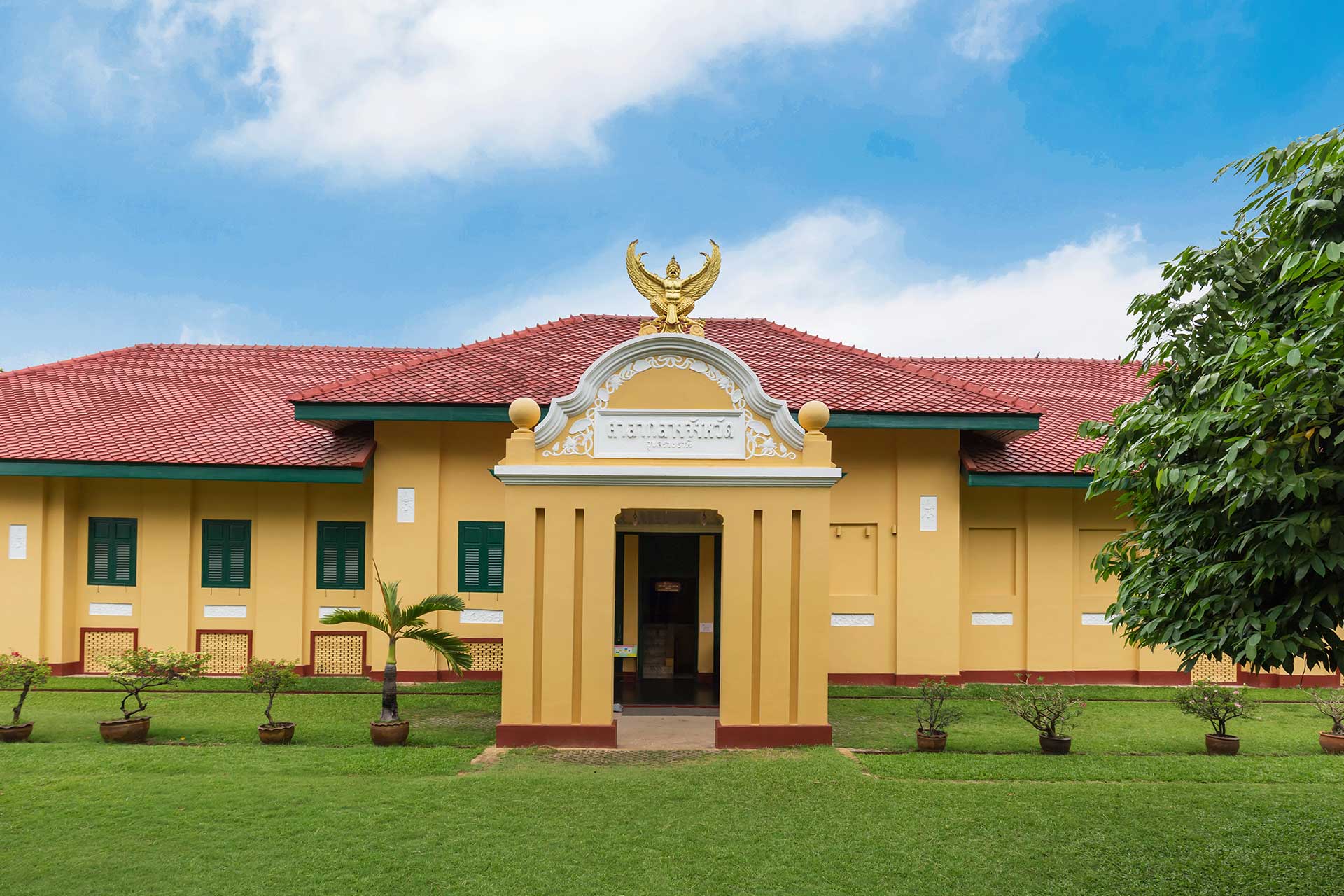
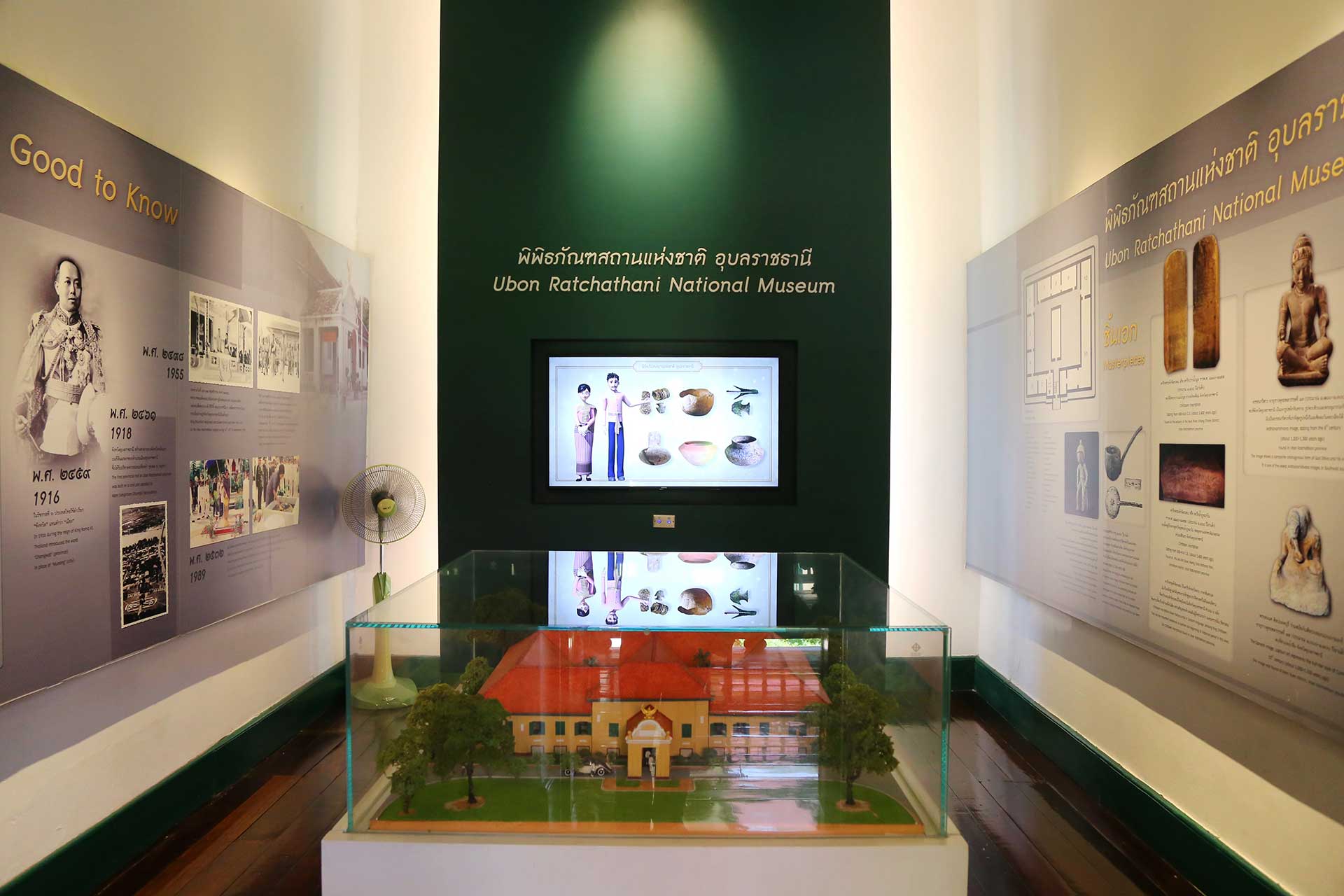
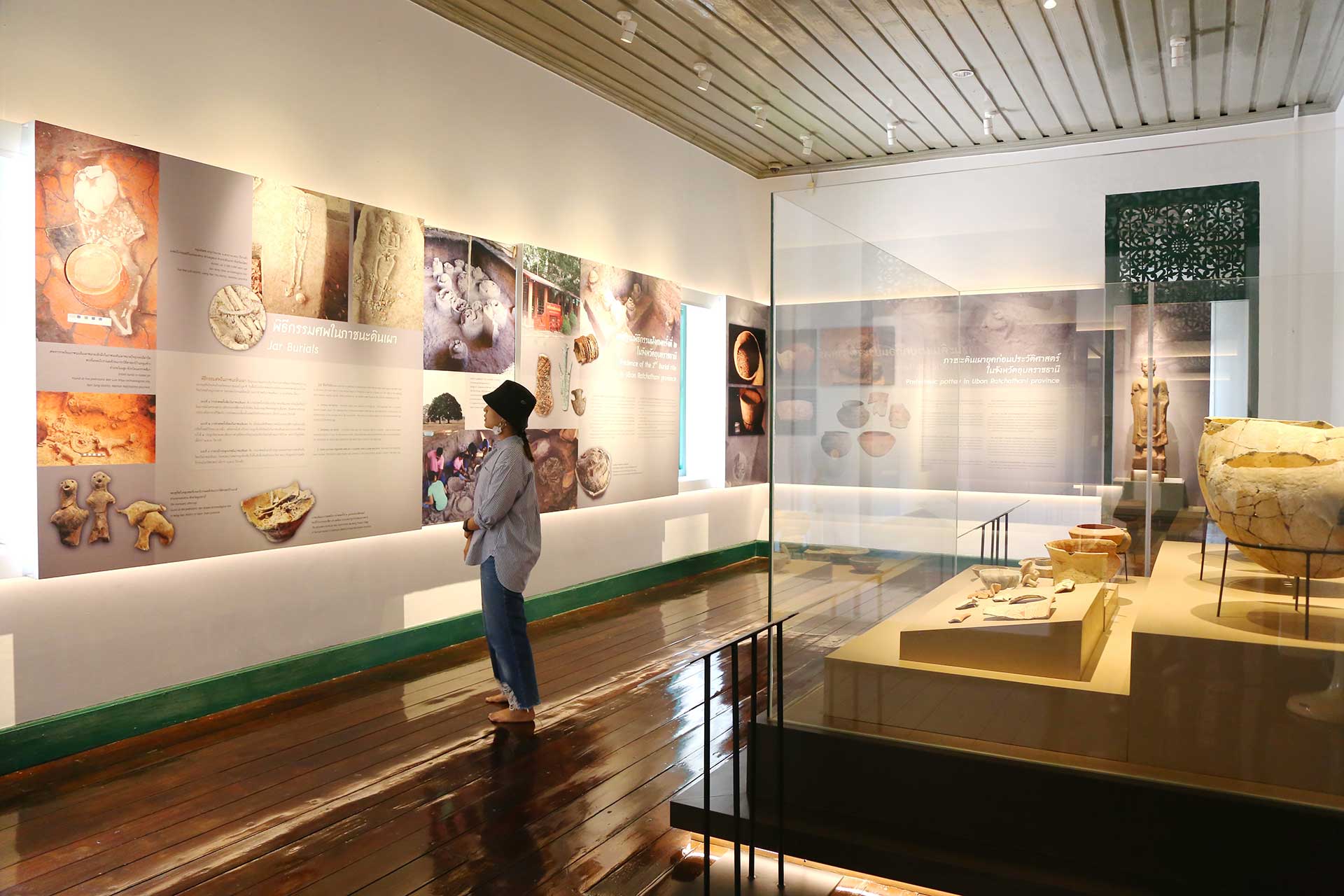
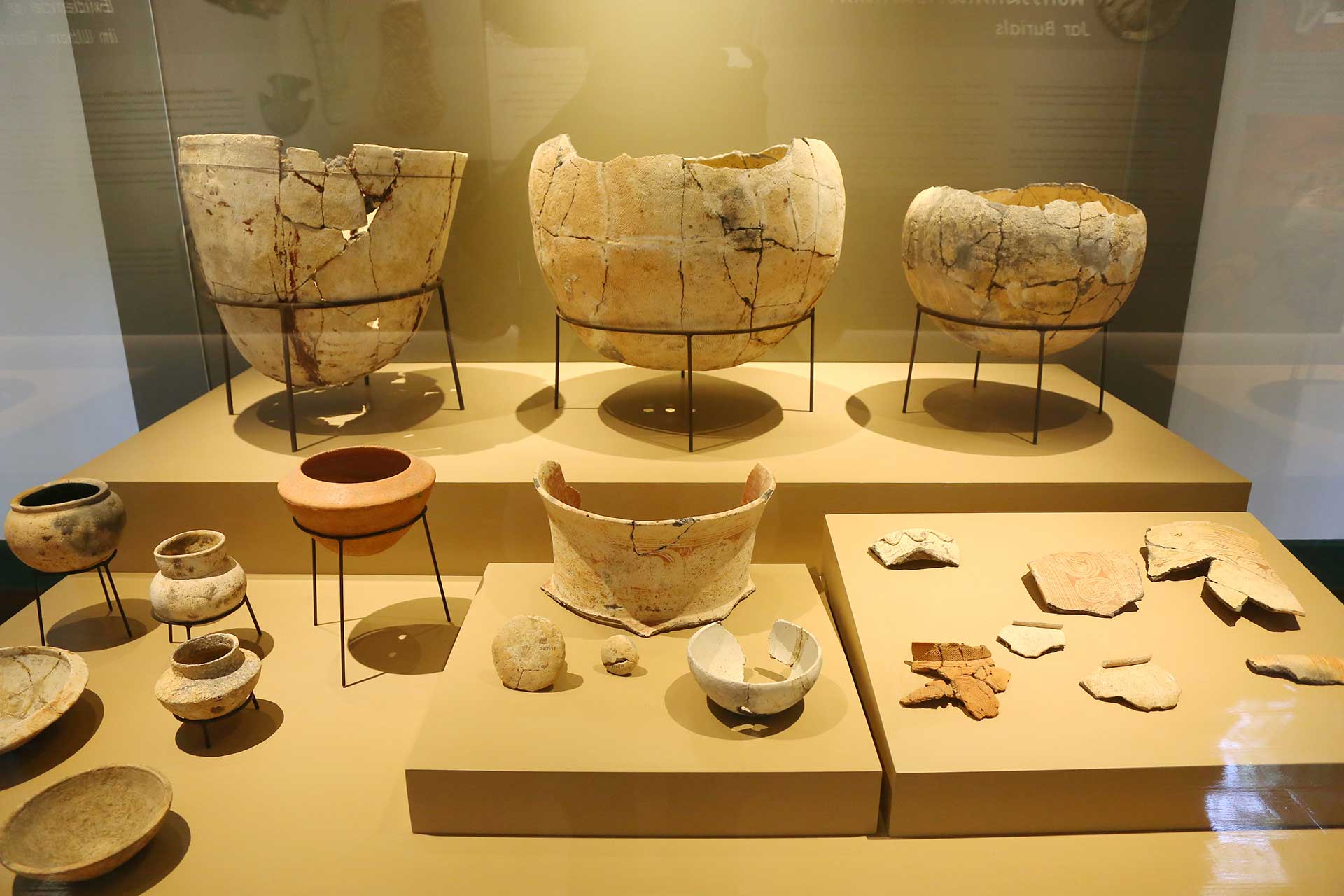
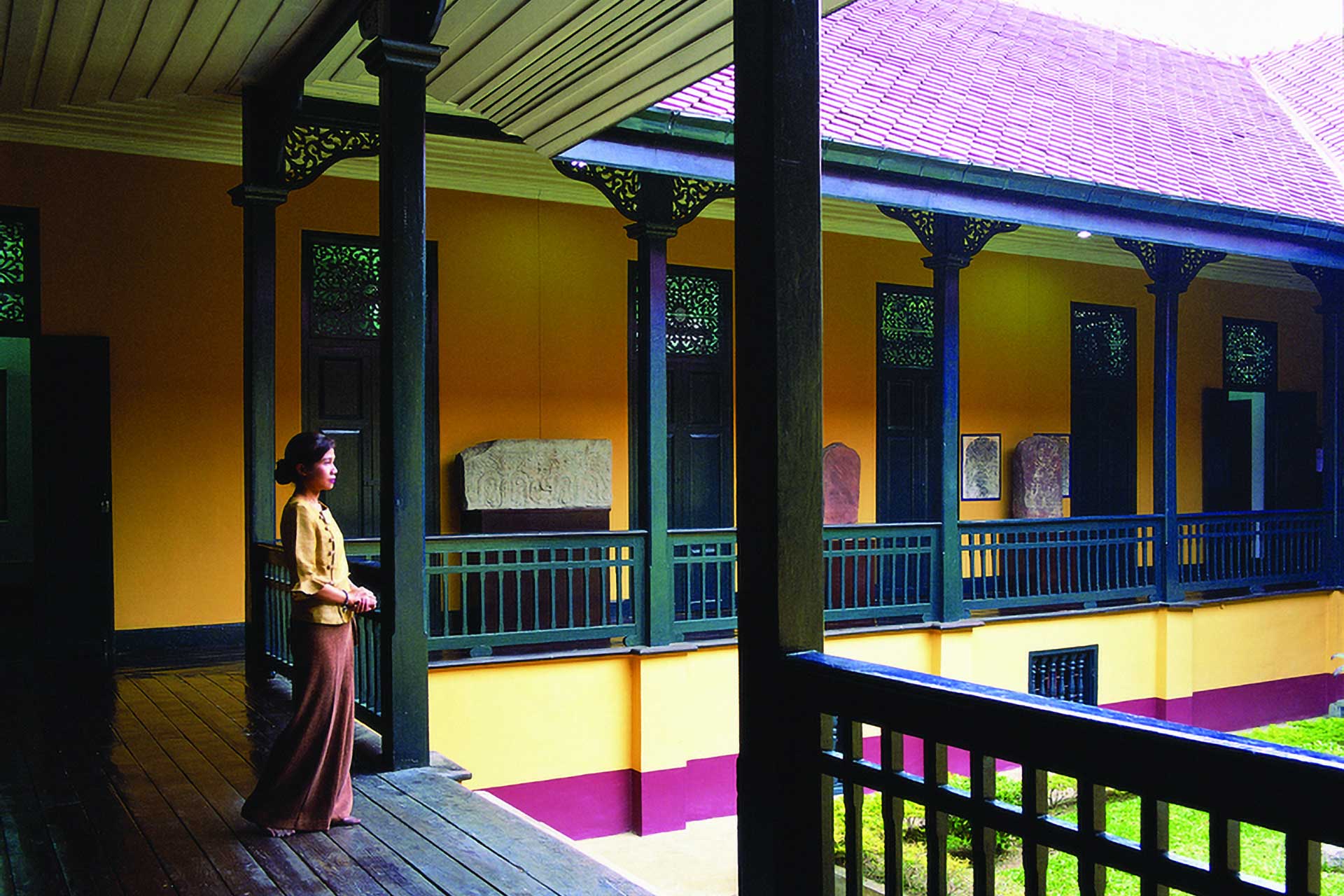
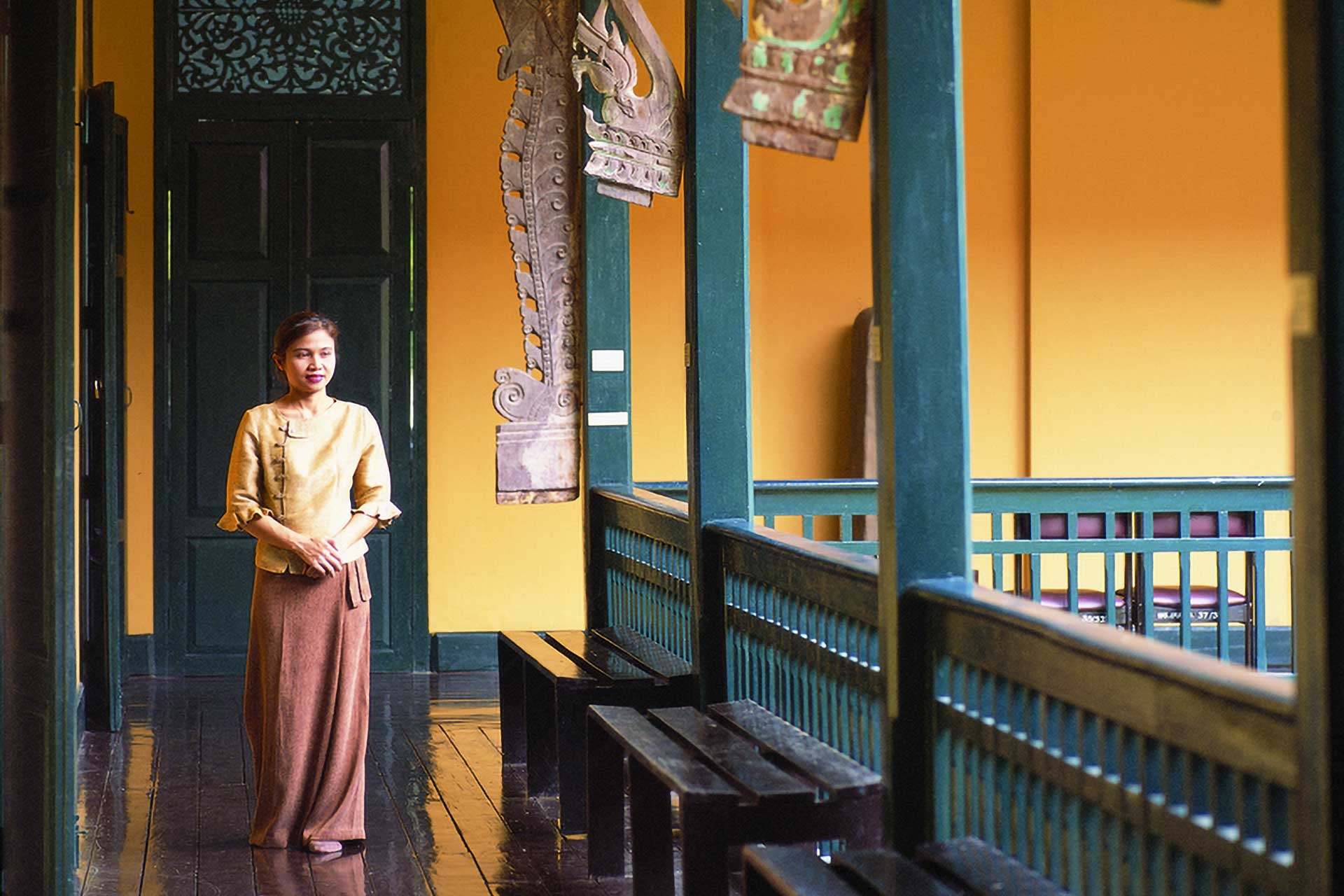


Follow Us
OUR SOCIAL MEDIA CHANNELS